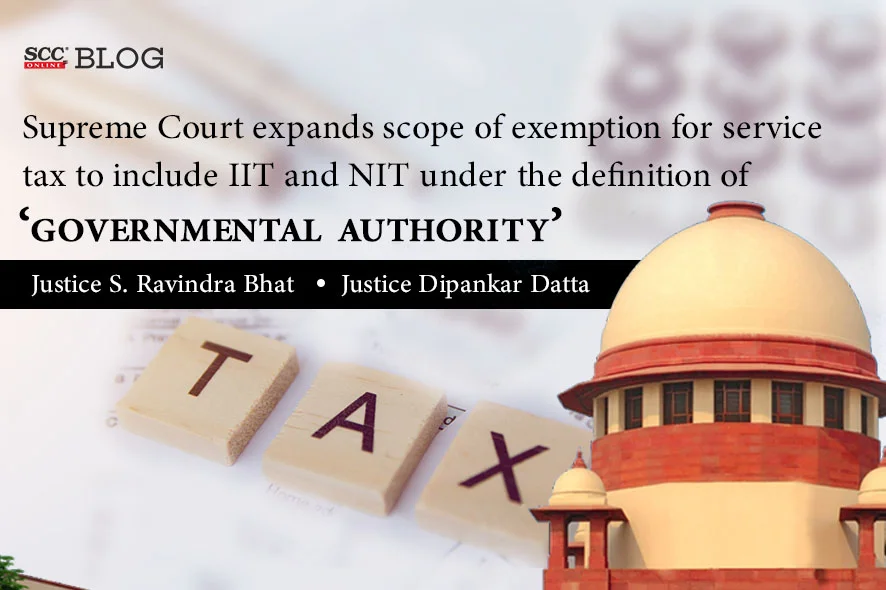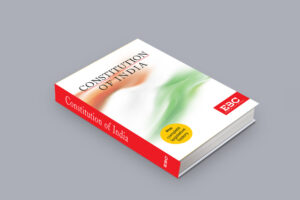Supreme Court: In two appeals, one against the judgment and order dated 03-03-2016 of the Patna High Court, whereby a writ petition preferred by Shapoorji Pallonji & Company Pvt Ltd (‘SPCL’) was allowed and the service tax collected by the Commissioner, Customs Central Excise and Service Tax was directed to be refunded. The other against the judgment and order dated 05-02-2018 of the Orissa High Court, wherein the Court while relying on the aforesaid decision of the Patna High Court in favour of SPCL, on a similar question of law, allowed for refund of service tax. The division bench of S. Ravindra Bhat and Dipankar Datta*, JJ. while upholding the impugned orders, said that the scope of the exemption was expanded to cover a larger section of entities answering the definition of “governmental authority” and widened the exemption base for service tax to be provided even to an authority or a board or any other body, set up by an Act of Parliament or a State Legislature without the condition of having been established with 90% or more participation by way of equity or control by Government to carry out any function entrusted to a municipality under Article 243-W of the Constitution. Thus, IIT and NIT will come under the Mega Service Tax Exemption Notification (‘Exemption Notification’).
Issue:
Whether Indian Institute of Technology, Patna (‘IIT’) and National Institute of Technology, Rourkela (‘NIT’), are covered by the definition of “governmental authority” in Exemption Notification inter alia exempting various services from the tax network rendered to government, governmental, or local authorities.
Analysis:
The Court noted that the Exemption Notification was issued by the Department of Revenue under Section 93 of the Finance Act, 1994 (‘the 1994 Act’) inter alia exempting various taxable services from the levy of whole of the service tax under Section 66B thereof.
To interpret “governmental authority”, the Court referred to Clause 2(s) of the Exemption Notification defining “governmental authority”. The Court noted that Section 66-D of the 1994 Act, inserted by the Finance Act, 2012 with effect from 1-07-2012, specifies the negative list of services, i.e., the services on which service tax is not leviable. The Court said that Clause 2(s) of the Exemption Notification underwent an amendment vide a Notification dated 30-01-2014 (‘Clarification Notification’). This amendment, re-defining “governmental authority”, sought to broaden the scope of the exemption.
The Court took note of the relevant clauses from the Exemption Notification and the Clarification Notification and said that it is necessary to ascertain the objective behind the Clarification Notification which amended the Exemption Notification and re-defined “governmental authority”. As per the Exemption Notification the scope of the exemption was severely restricted to only a few entities. Therefore, the scope of the exemption was expanded to cover a larger section of entities answering the definition of “governmental authority” and widened the exemption base for service tax to be provided even to an authority or a board or any other body, set up by an Act of Parliament or a State Legislature without the condition of having been established with 90% or more participation by way of equity or control by Government to carry out any function entrusted to a municipality under Article 243W of the Constitution.
The Court disagreed with the Commissioner’s interpretation that to qualify as a “governmental authority” under clause 2(s)(i), such authority, board or body must not only be a statutory authority set up by an Act of Parliament or a State Legislature but must also have 90% or more participation of the Government by way of equity or control to carry out any like function that a municipality under Article 243-W of the Constitution is entrusted to discharge.
The Court said that it is a well-established principle of statutory interpretation that any authority, entrusted with the function of legislating, legislates for a purpose; it can, thus, safely be assumed that it will not indulge in unnecessary or pointless legislation.
After referring to Sri Jeyaram Educational Trust v. A.G. Syed Mohideen, (2010) 2 SCC 513, the Court said that when the meaning of the provision in question is clear and unambiguous by the usage of “or” in clause 2(s), then “or” should not be interpreted as “and”. As, the word “or” employed in clause 2(s) manifests the legislative intent of prescribing an alternative. Going by the golden rule of interpretation that words should be read in their ordinary, natural, and grammatical meaning, the word “or” in clause 2(s) clearly appears to us to have been used to reflect the ordinary and normal sense, that is to denote an alternative, giving a choice; thus a different meaning cannot be assigned, unless it leads to vagueness or makes clause 2(s) absolutely unworkable.
The Court said that in the present case, the use of a semicolon is not a trivial matter but a deliberate inclusion with a clear intention to differentiate it from sub-clause (ii). Further, it observed upon a plain and literal reading of clause 2(s) that while there is a semicolon after sub-clause (i), sub-clause (ii) closes with a comma, long line of clause 2(s) governs only sub-clause (ii) and not sub-clause (i) because the introduction of semicolon after subclause (i), followed by the word “or”, has established it as an independent category, thereby making it distinct from sub-clause (ii). Therefore, the Court said that it cannot overstep and interpret “or” as “and” to allow the alternative outlined in clause 2(s) to vanish.
Thus, the Court held that the long line of clause 2(s) starting with “with 90%” and ending with “Constitution” qualifies sub-clause (ii); and, if the conjunction ‘or’ is to be read as ‘and’, meaning thereby that the portion “with 90% … Constitution” has to be read as qualifying both sub-clauses (i) and (ii), then the intention of re-defining “governmental authority” would certainly be defeated. Therefore, the purpose for which “governmental authority” was re-defined must have been to make it workable.
Further, it observed that the authority having the competence to issue a notification completed its job by re-defining “governmental authority” and now it is a task entrusted to the courts to interpret the law.
Placing reliance on Girdhari Lal & Sons v. Balbir Nath Mathur, (1986) 2 SCC 237, the Court said that an interpretation of the relevant provision resulting in the expanded scope of its operation cannot in itself be sufficient to attribute ambiguity to the provision.
The Court said that to make a statute workable by employing interpretative tools and to venture into a kind of judicial legislation are two different things. Merely because the statute does not yield intended or desired results, that cannot be reason to overstep and cross the lakshman rekha by employing tools of interpretation to interpret a provision keeping in mind its outcome. Interpretative tools should be employed to make a statute workable and not to reach a particular outcome.
[CCE v. Shapoorji Pallonji & Co. (P) Ltd., 2023 SCC OnLine SC 1330, decided by 13-10-2023]








